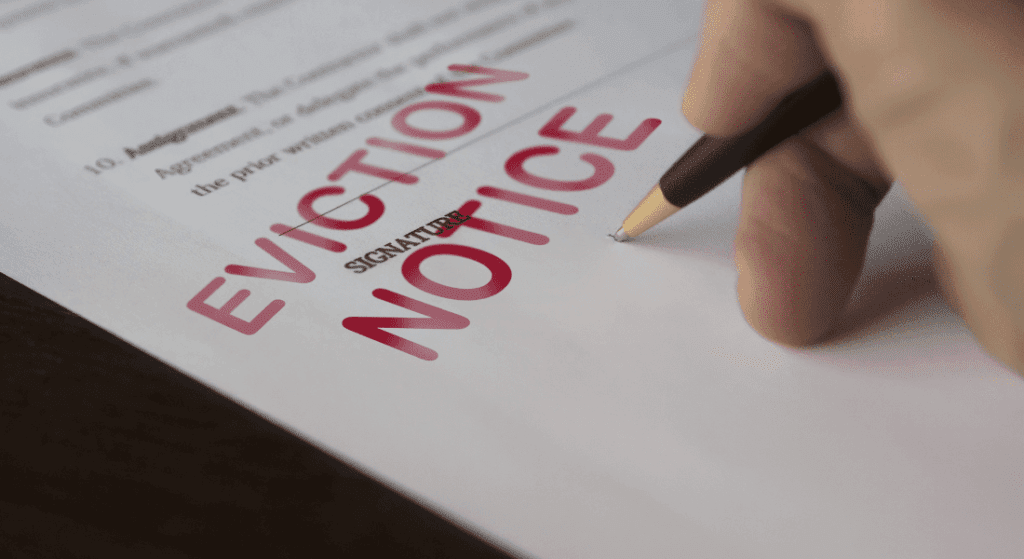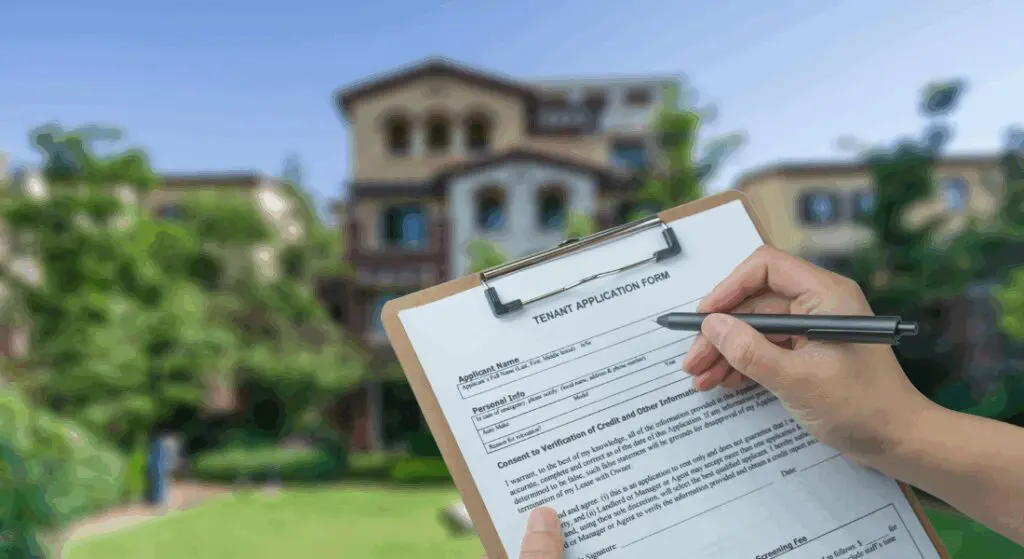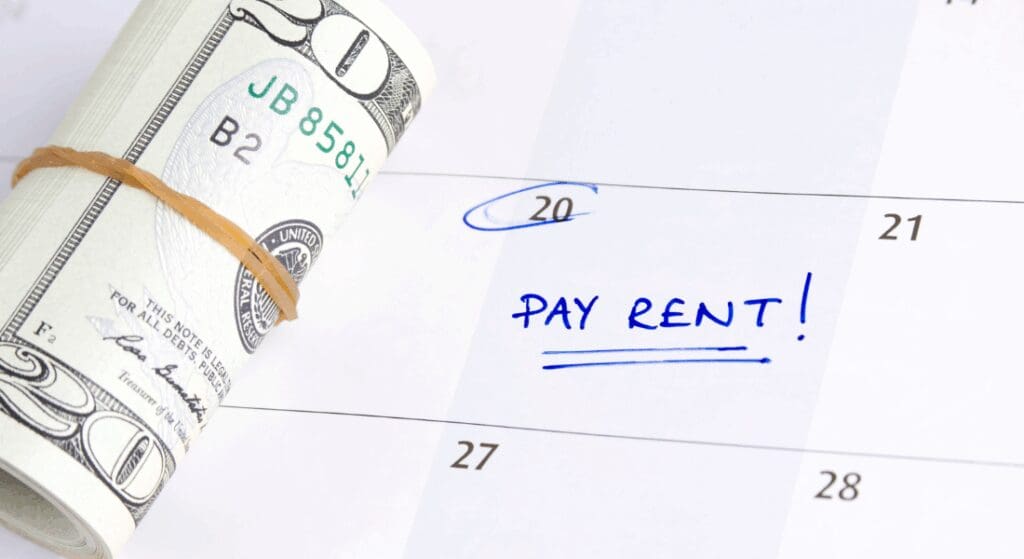If your home becomes unlivable, do you still have to pay rent? Can your landlord evict you if you refuse? This blog breaks down your tenant rights, landlord responsibilities, and what to do if your rental unit becomes uninhabitable.
As a tenant, you’re expected to pay rent, respect the lease, and maintain the space. But what happens when the landlord fails to do their part—when the roof leaks, the heat doesn’t work, or the plumbing doesn’t work? If your rental property becomes unsafe or unsanitary, you might be wondering what your legal rights are and whether eviction is a real threat if you stop paying rent.
This article is your go-to guide for understanding the warranty of habitability, what’s legally considered uninhabitable, how to get your landlord to make repairs, and what happens when a tenant refuses to vacate a home that shouldn’t be lived in. We’ll also go over the eviction process, how to give your landlord a written notice, and when constructive eviction may apply.
Table of Contents
ToggleWhat is the Warranty of Habitability and Why Does it Matter?
The warranty of habitability is a legal doctrine that says your landlord must maintain your rental property in a condition that’s fit for human habitation. This means the property must have working plumbing, safe electrical systems, secure windows and doors, and no major code violations.
Every lease—whether it’s written or verbal—includes this implied warranty of habitability. It doesn’t matter if your lease says you’re accepting the unit “as-is.” The law says your landlord can’t waive this warranty.
As a tenant, this warranty protects you. If your unit becomes legally uninhabitable, you have options: withhold rent, repair and deduct, or even vacate and claim constructive eviction.
When Is a Rental Unit Legally Declared “Uninhabitable”?
To be legally uninhabitable, the rental unit must have serious problems that affect health or safety. Some examples:
- Plumbing doesn’t work, so there’s little water or none at all
- No heat in freezing temperatures
- Electrical issues that pose a fire risk
- Infestations or mold
- It’s structurally unsafe
This means that the rental unit must not only be clean and orderly—it must be safe and functional. If your house were inhabitable due to any of these issues and the landlord does not fix it after notice, it could trigger constructive eviction.

What Repairs Must a Landlord Make by Law?
Generally, the landlord must ensure:
- Functioning plumbing, heating, and electrical systems
- A solid roof and structure
- Pest-free environment
- Adequate locks and security
- Working smoke and carbon monoxide detectors
If a tenant reports issues, the landlord must make repairs within a reasonable time, usually within 30 days, depending on your state law, or sooner for emergencies.
Failure to act could mean the landlord has failed their duty under the warranty of habitability. At that point, the tenant may be legally justified in not paying rent or even ending the lease.
Can a Tenant Stop Paying Rent if the Home Is Uninhabitable?
This is tricky. You can’t just stop paying rent and hope for the best. But in many states, if your landlord fails to fix the problem after you’ve given them written notice, you may be allowed to refuse to pay rent under specific conditions.
Some states allow the tenant to use the repair and deduct method: You hire someone to do the repair, then subtract it from the rent. Others require you to move out and sue later. You must follow the correct legal steps or risk losing your case in small claims court.
Keep in mind: If a tenant refuses to pay rent without proper notice or documentation, the landlord may begin an eviction action.
How Does a Tenant Prove Habitability Issues?
If you’re going to claim the unit is uninhabitable, you’ll need proof. Courts don’t accept vague complaints.
Here’s what you should do:
- Send your landlord a written notice describing the issue
- Take photos or videos of the problem
- Get reports from the health department or code enforcement
- Keep copies of texts, emails, and letters
- Collect repair estimates or contractor reports
If you end up in an eviction case, you’ll want evidence that proves the rental unit was not in a livable condition and that your landlord failed to provide a safe home.
What Is Constructive Eviction and When Can It Be Claimed?
Constructive eviction occurs when the landlord makes the unit so uninhabitable that the tenant has no choice but to vacate. In this case, it’s considered the landlord’s actions—not the tenant’s—that caused the departure.
To successfully claim constructive eviction, a tenant must:
- Prove the rental property was uninhabitable
- Prove they gave the landlord a written notice and a chance to fix it
- Show they moved out within a reasonable time
This is a strong defense to offer if you receive an eviction notice after moving out. It may also help you get back your security deposit or even sue for one month’s rent.
What Steps Should a Tenant Take Before Moving Out?
If your rental becomes uninhabitable, don’t just leave. To protect yourself:
- Give your landlord a detailed written notice
- Let them try to make repairs
- Wait a reasonable time
- Document everything
- If they don’t respond, you can vacate
Leaving too soon, or without giving notice, can damage your case. If the tenant refuses to leave after giving notice, the landlord may claim they abandoned the lease. On the other hand, if you decided to stay, it may be harder to argue the place was truly unfit.
How Does the Eviction Process Work If the Tenant Refuses to Leave?
If a tenant refuses to vacate after being given an eviction notice, the landlord may file an eviction action in court.
The eviction process typically includes:
- A written notice (usually 3–30 days, depending on local laws)
- A court hearing
- A court order or writ of possession if the tenant loses
- A scheduled lockout date
Even if you feel justified, you can’t stop an eviction by ignoring it. You’ll need to present your case in court, especially if you’re claiming constructive eviction or habitability issues.
What Kind of Written Notice Must a Landlord Give Before Eviction?
The type of eviction notice depends on the reason:
- Pay rent or move: Given when the tenant refuses to pay rent
- Cure or quit: Given that the tenant violates the lease
- Unconditional quit: No chance to fix anything—just vacate
The landlord must give the correct notice for the reason, and it must comply with landlord-tenant law. If they don’t, the case can be dismissed.
Even if the tenant’s behavior is problematic, an invalid notice means the landlord can’t legally evict yet.
What Are the Tenant’s Rights After Moving Out of an Uninhabitable Property?
After leaving an uninhabitable unit, a tenant may have the right to:
- Break the lease without penalty
- Get back their security deposit
- Sue for damages or one month’s rent
- File complaints with code enforcement or the health department
- Find comparable rental units with better conditions
In some cases, tenants even win cases in small claims court for emotional distress or moving costs. But again, it all depends on following the law and proving the landlord failed their duty.
Trusted Property Management in Clarksville, TN
Looking for expert property management in Clarksville, TN? Connerth & Co. Property Management provides personalized, hands-on service backed by local expertise. We offer comprehensive property management solutions that include marketing, tenant placement, maintenance coordination, rent collection, and legal compliance. As a small, locally owned company, we manage fewer homes so we can give each property the attention it deserves, helping you protect your investment and maximize rental income with confidence and ease.
Key Takeaways: What Every Tenant Should Remember
- The warranty of habitability requires your landlord to keep the property fit for human habitation.
- A rental unit becomes uninhabitable when essential systems fail or conditions are unsafe.
- Always give your landlord a written notice and a chance to make repairs before acting.
- If the landlord does not fix the issue, you may be able to vacate or refuse to pay rent, depending on local law.
- Keep documentation: photos, emails, notice of the problem, and inspection reports.
- You may claim constructive eviction if forced to leave due to conditions.
- The eviction process includes specific legal steps—both sides must follow them.
- Tenants who break a lease due to habitability concerns should gather evidence and consider legal advice.
- You can challenge an eviction notice in court if your claims are valid.
- Learn your rights under landlord-tenant law and protect your living situation.
Let the law work for you—make every effort to resolve the issue legally and peacefully before considering court.
FAQs
Q. How to Kick Out Unwanted Tenants?
A. Removing an unwanted tenant—even if they’re not paying rent or if there’s no written lease—must follow the eviction process defined by state law. As a landlord, you must give the tenant a written notice and wait the required number of days before filing an eviction action in court.
Steps to remove an unwanted tenant legally:
- Serve a proper eviction notice (e.g., 3-day notice to pay or quit, 30-day notice to vacate).
- Wait the appropriate amount of time based on the type of eviction notice.
- If the tenant refuses to leave, file an eviction case in court.
- If approved, obtain a writ of possession from the judge.
- A sheriff or court officer will enforce the removal.
Never attempt “self-help” eviction like changing the locks, shutting off utilities, or removing belongings. That is illegal and can lead to fines or lawsuits.
Q. What Is Considered Uninhabitable?
A. A rental unit is considered uninhabitable if it poses serious risks to health or safety. Under the warranty of habitability, the landlord must maintain the property so that it is fit for human habitation.
Conditions that make a unit uninhabitable include:
- No working plumbing or electricity
- No heat during cold months
- Mold, toxic substances, or sewage backups
- Pest infestations (rats, roaches)
- Structurally unsafe buildings (leaking roofs, collapsing stairs)
- Lack of clean water or sanitation
If any of these problems exist and are not fixed in a reasonable time after the tenant provides a written notice, the home may be legally declared “uninhabitable.”
Q. What Is the Habitability Law In?
A. The habitability law in each state outlines the landlord’s duty to keep rental properties in a habitable condition and the tenant’s rights if the home is unsafe.
Generally, the implied warranty of habitability applies in all residential leases, even if not mentioned in the contract. This means the landlord must:
- Keep the home structurally sound
- Provide hot and cold water
- Ensure working plumbing, electricity, and heat
- Comply with health department and code enforcement rules
To find the specific habitability laws in your state, check with your state housing authority or local landlord-tenant law statutes.
Q. How Do You Get Rid of Someone Who Won’t Move Out?
A. If someone (like a former roommate, guest, or family member) refuses to move out of your home or rental property, you must use legal channels. You cannot just force them out.
Steps to take:
- Determine if they’re considered a tenant under state law (did they pay rent or have permission to stay?).
- If so, you must serve an eviction notice.
- File an eviction action in court if they still don’t leave.
- Get a court order and have a sheriff make him leave.
Even if the person was never on a lease, if they’ve lived there for a while, you must treat them like a tenant under the law. Always seek legal advice if you’re unsure how to proceed.




